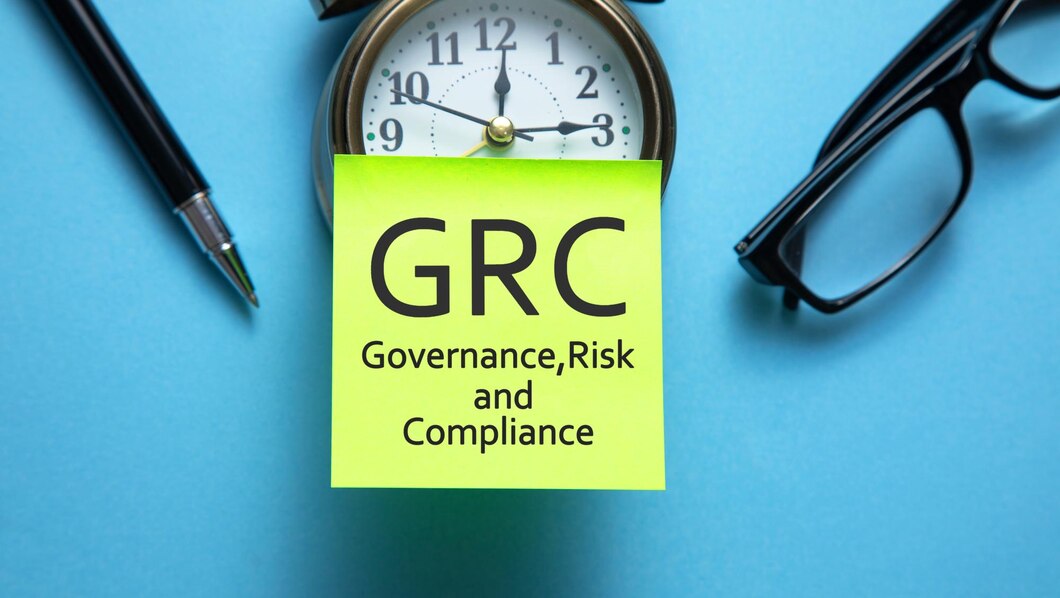In today's dynamic business environment, organizations are confronted with an evolving array of threats, ranging from cybersecurity risks and regulatory changes to operational disruptions and financial challenges. To ensure that the business operations continue uninterruptedly and long-term success is preserved, discovery and management of these risks are essential. Governance, Risk Management, and Compliance (GRC) frameworks have become necessary for businesses that want to navigate and manage this complex landscape proactively.
Understanding GRC: More Than Just Compliance
GRC has three essential components:
- Governance: Governance is the establishment and implementation of processes and policies that correspond to an organization's strategic objectives and accountability and decision-making protocols.
- Risk Management: Risk Management involves identifying, analyzing, and reducing or eliminating possible dangers to an organization's assets, operations, and reputation. Under GRC risk management, organizations become proactive about reducing vulnerabilities that will not threaten business continuity.
- Compliance: This is the assurance that the organization adheres to the industry's standards, laws, and regulations. It is an effective GRC compliance mechanism that helps avoid legal issues, financial penalties, and reputational loss.
Previously, such domains were often segregated. Within GRC frameworks, these domains are now integrated to improve risk visibility, streamline various business processes, and enable better strategic decision-making. This approach can make an organization agile when facing complex challenges. It further prevents duplicative effort and gaps in oversight.
Proactive Risk Identification with GRC
The biggest payoff of a GRC framework is probably proactive risk identification. Rather than reacting to problems as they present, a mature GRC program enables businesses to think ahead and identify potential menaces before they strike.
- Improved Visibility: A GRC risk management system can provide an organization-wide view of risk. Because it generally gathers information from various sources and centralizes it in a single view, it becomes easier to identify risk as it originates from changes in regulations, cyber vulnerabilities, or operational inefficiencies.
- Advanced Analytics: This can be achieved using data analytics and automation in a GRC compliance framework to identify patterns and predict risks. This way, probable threats are identified early before they escalate, and management can take action promptly.
- Risk Assessment and Prioritization: Effective GRC platforms classify risks according to their likelihood and impact. Risk prioritization allows an organization to allocate its resources and respond to threats that require urgent attention by using strategic and cost-effective preventive measures.
Risk Management: A GRC-Driven Strategy
Once the identified risks are responded to, a GRC ensures that this response is structured and timely. Risks can be managed through a GRC framework. A GRC-driven approach to the aspect of risk management includes
- Developing Action Plans: The GRC compliance framework should outline response strategies for each identified risk. Such plans should not only prevent risks but also develop procedures for easy recovery in case a risk eventually occurs.
- Monitoring and Adaptation: Risks are not fixed; neither should a risk management policy. GRC risk management tools constantly monitor the risk landscape and suggest changes when warranted. This adaptability can work wonders when dealing with risks in such an environment of shifting ground beneath a business today.
- Implementation of Compliance Culture: The complexity of regulations makes it essential to ensure GRC is in place within an organization to enable it to stay compliant with the changing needs of industry standards. This makes compliance part and parcel of the business's daily activities, thus minimizing the chances of non-compliance and subsequent penalties associated with it.
Let’s Conclude
Integrating GRC into the corporation's structure provides a proactive and holistic approach to identifying and managing risk. Thus, in an environment with integrated governance, risk management, and compliance, such organizations would easily expect problems and respond appropriately to achieve resilience.
For an enhanced GRC practice, INTERCERT offers businesses industry-leading certification and training solutions. With the richest of experiences in the GRC framework, INTERCERT empowers organizations to strengthen governance, minimize risks, and achieve regulatory compliance, thus embracing a future of sustained growth and security.
A PHP Error was encountered
Severity: Notice
Message: Undefined variable: clientlist
Filename: views/blog_view.php
Line Number: 67
Backtrace:
File: /home/sysintercert/public_html/application/views/blog_view.php
Line: 67
Function: _error_handler
File: /home/sysintercert/public_html/application/controllers/Blogs.php
Line: 41
Function: view
File: /home/sysintercert/public_html/index.php
Line: 316
Function: require_once
A PHP Error was encountered
Severity: Warning
Message: Invalid argument supplied for foreach()
Filename: views/blog_view.php
Line Number: 67
Backtrace:
File: /home/sysintercert/public_html/application/views/blog_view.php
Line: 67
Function: _error_handler
File: /home/sysintercert/public_html/application/controllers/Blogs.php
Line: 41
Function: view
File: /home/sysintercert/public_html/index.php
Line: 316
Function: require_once

